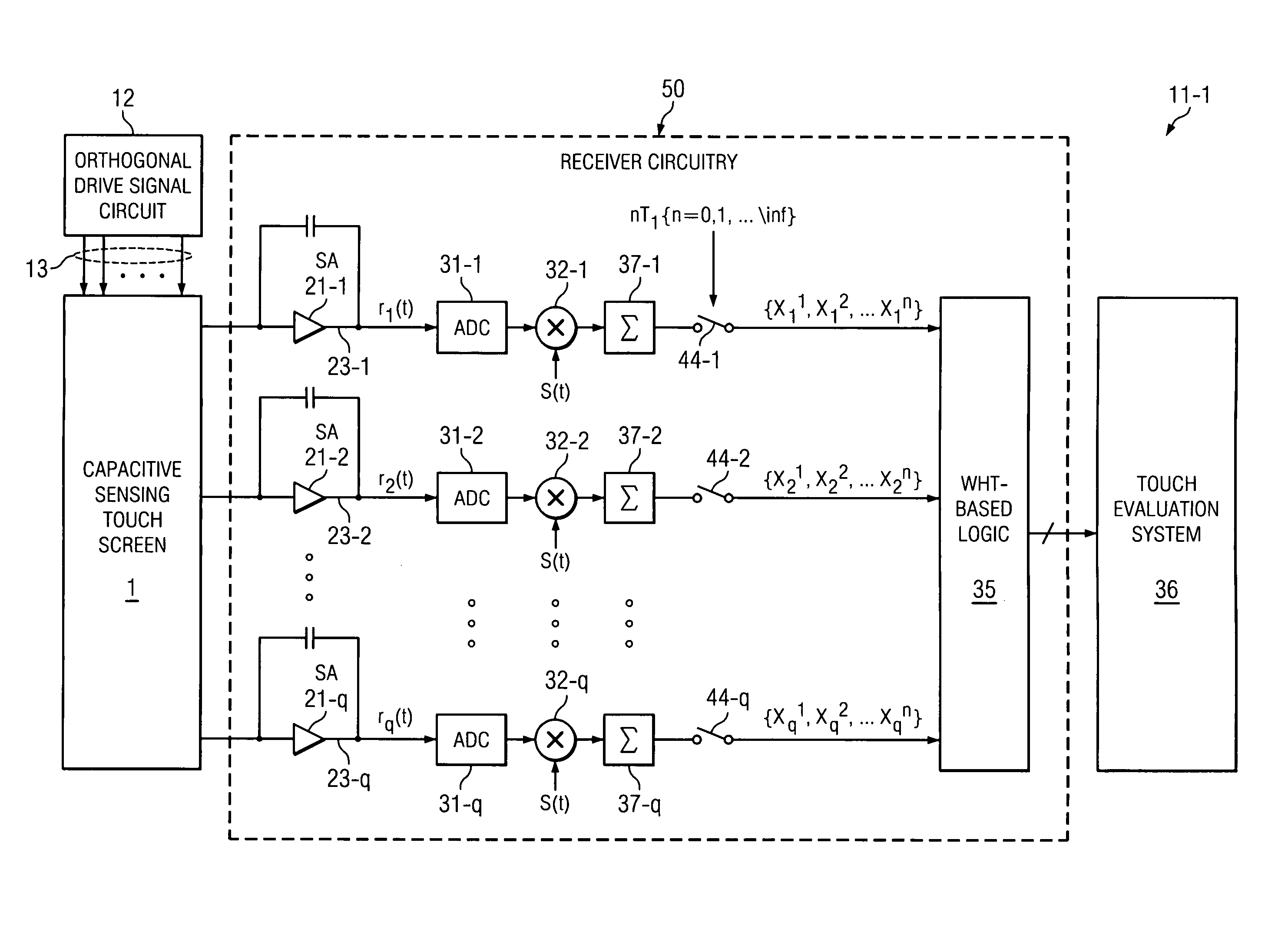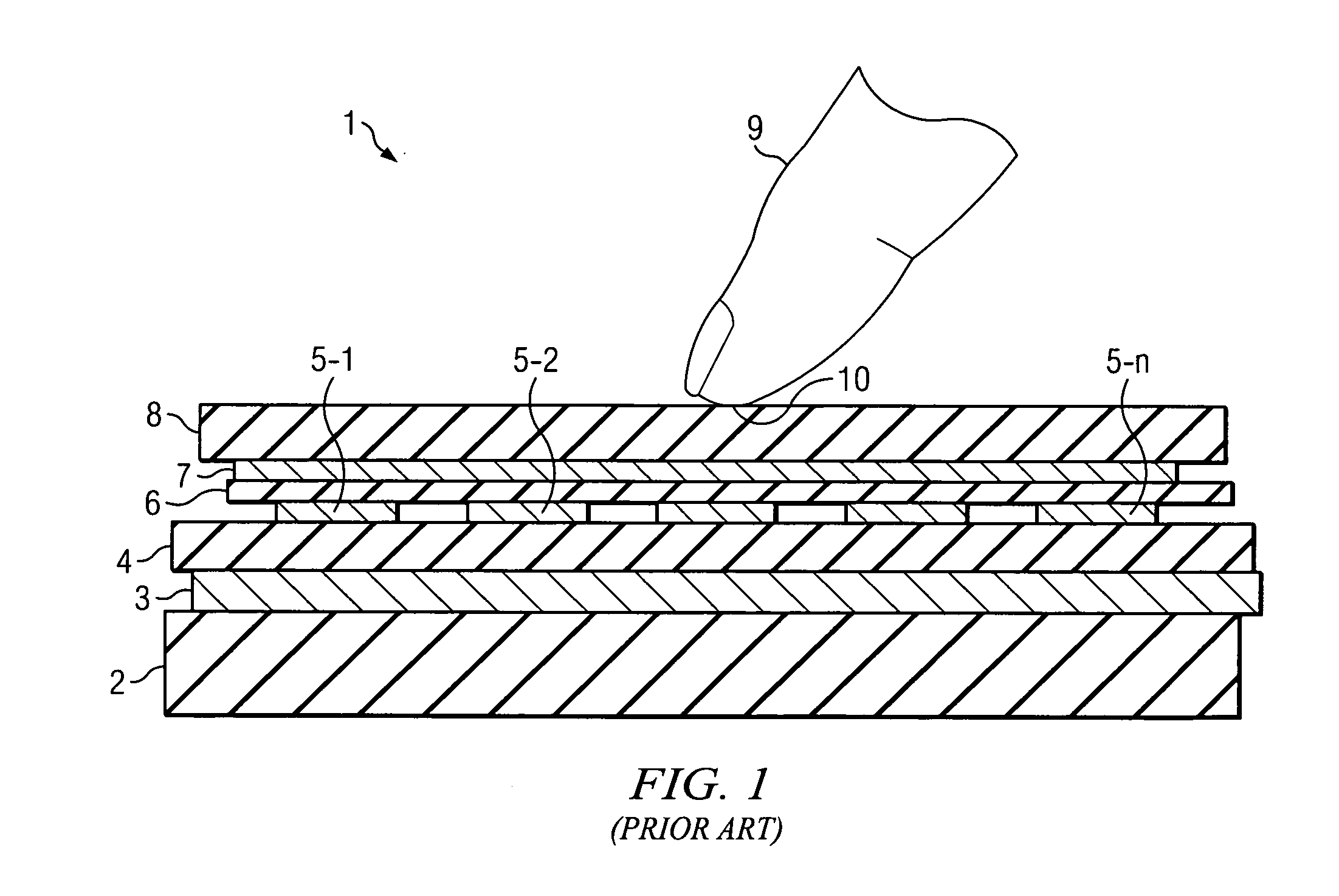Touch-sensitive interface and method using orthogonal signaling
a touch-sensitive interface and orthogonal signaling technology, applied in the field of capacitance touch-screen sensing systems, can solve the problems of large amount of signal processing, difficult to accurately sense the very low level of capacitance change and the resulting signal change, etc., and achieve the effect of increasing the touch sensitivity
- Summary
- Abstract
- Description
- Claims
- Application Information
AI Technical Summary
Benefits of technology
Problems solved by technology
Method used
Image
Examples
Embodiment Construction
[0044]The present invention overcomes the above mentioned problems of the prior art by using orthogonal signals to excite a touch screen and to sense the resulting capacitively coupled signals generated on various grid conductors of the touch screen. All (or a substantial part) of the entire touch screen display can be excited simultaneously by the orthogonal excitation signals. The orthogonal excitation signals can be applied to touch screen grid conductors (such as row conductors 7-1,2 . . . n and column conductors 5-1,2 . . . q in FIG. 1) for much longer time intervals than would be possible using the previously mentioned round robin row and column scanning techniques. This allows signal energy levels to be increased without increasing supply voltage levels. Since a certain amount of signal energy is needed to overcome noise signals that may be present, such increased signal energy levels allow more accurate touch estimates to be achieved at lower signal power levels than is poss...
PUM
 Login to View More
Login to View More Abstract
Description
Claims
Application Information
 Login to View More
Login to View More - R&D
- Intellectual Property
- Life Sciences
- Materials
- Tech Scout
- Unparalleled Data Quality
- Higher Quality Content
- 60% Fewer Hallucinations
Browse by: Latest US Patents, China's latest patents, Technical Efficacy Thesaurus, Application Domain, Technology Topic, Popular Technical Reports.
© 2025 PatSnap. All rights reserved.Legal|Privacy policy|Modern Slavery Act Transparency Statement|Sitemap|About US| Contact US: help@patsnap.com



